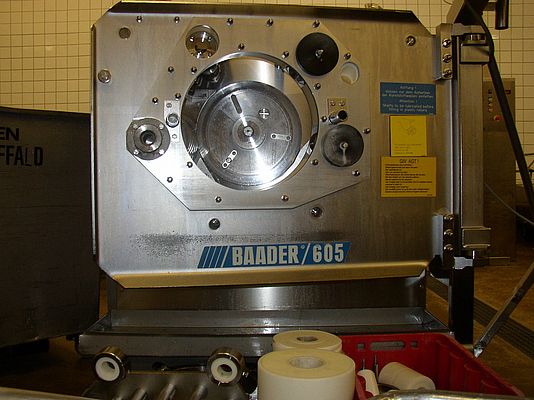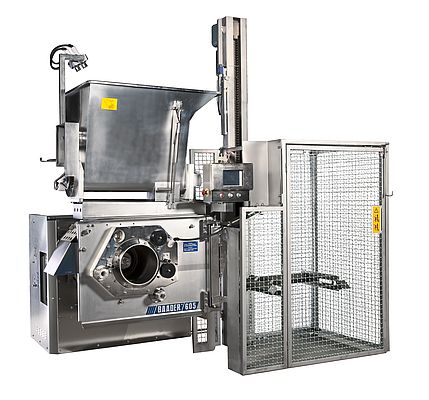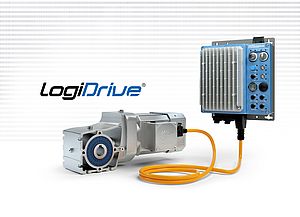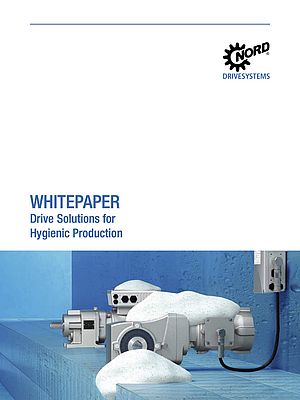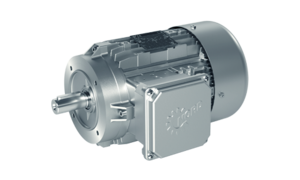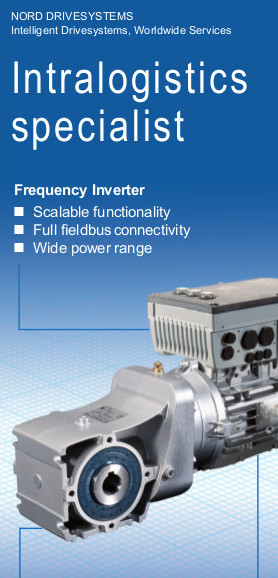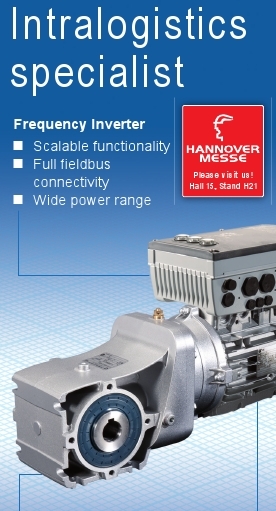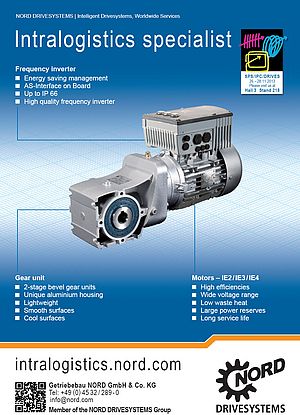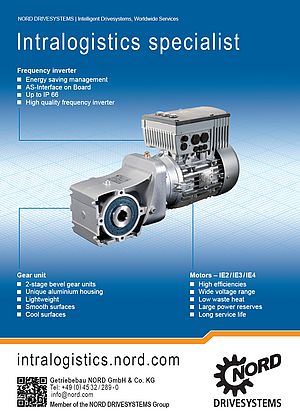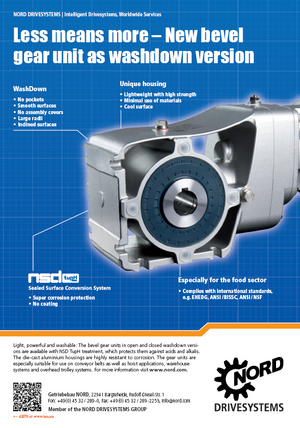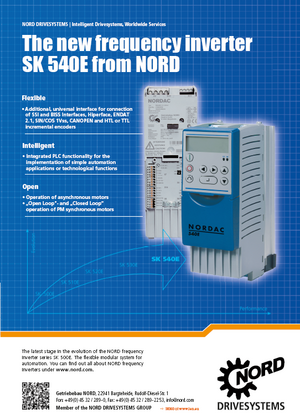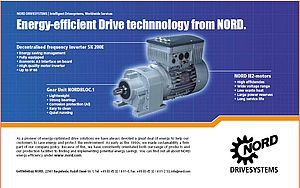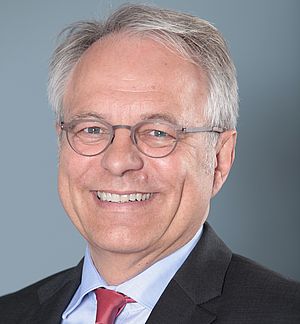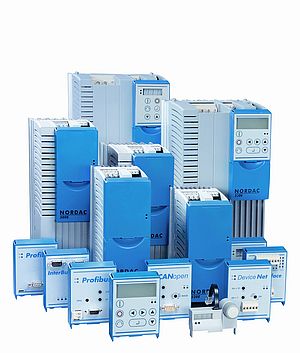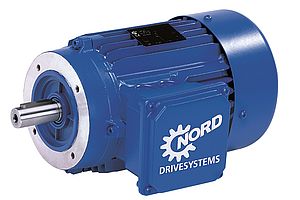Soft separators are used to separate the solid and soft components of a range of basic products. They ask for robust, reliable drive technology components that are suitable for the requirements of the food industry.
How to best puree fruit containing stones, or to separate fish mince from fishbone? And how to remove sinew and gristle from meat without wasting material? Every amateur chef who has already spent hours pressing fruit through a sieve with a spoon or preparing chicken soup knows these questions. In the food industry, these methods have an automated equivalent that makes time-consuming manual labor unnecessary: so-called soft separators are used to gently separate the solid and soft components of a wide range of basic products. Robust, reliable drive technology components that are suitable for the requirements of the food industry are a key prerequisite for a consistently high product quality.
A clean separation
Founded in 1919 in Lübeck, Germany, the company Nordischer Maschinenbau Rud. Baader GmbH + Co. KG is a pioneer in mechanical fish processing. In addition to single machines and complete processing lines for the fish industry, BAADER has also been developing and producing versatile soft separators and poultry processing machines for several decades. Today, the BAADER group is a leading manufacturer of machinery and processing plant for the food industry. With a staff of more than 1,000, BAADER operates production facilities in Denmark, Iceland, the Netherlands and the USA as well as a worldwide service and sales network.
The BAADER group developed suitable technology for the clean separation of meat and sinews or cartilage more than 40 years ago. Over time, the product range was extended, and now includes soft separators with varying performances that can be used to remove sinew from meat and poultry, to recover meat from fish, to extract pulp from fruit and vegetables, and to unpack food products. In BAADER soft separators, a toothed chain powered by a geared motor is used to move a squeezing belt. The squeezing belt transports the product to a perforated drum and squeezes the soft components through the perforation, while the solid particles remain outside of the drum. An adjustable cylinder allows users to adjust the yield/quality ratio.
This method ensures maximum product quality and minimal temperature in-crease. Thus, the cell structure of the source product is not destroyed, since the squeezing belt system offers sufficient flexibility. At the same time, unwanted solid components are kept out of the end product during meat processing. Last but not least, the method results in considerable time savings and a standardized final product compared to manual product separation.
Versatile machines
BAADER's soft separators were developed in the 1960s and have been constantly optimized since then, for example with regard to the cleaning options. They comply with internationally recognized hygiene standards. In several models, helical bevel geared motors from NORD serve as drive units. One example is the BAADER 605 type, which reaches a maximum performance of approximately 3,000kg per hour depending on the hole size in the perforated drum, the feeding type, the product, the feeding temperature and the selected pressure – thereby qualifying for continuous large volume processing. Users can choose a hole diameter of 1.3, 2, 3, 5 or 8mm in the perforated drum, with other diameters available on request.
Custom-tailored drive technology
The robust helical bevel gear motors of the SK 9016.1, SK 9022.1 and SK 9042.1 gear unit types have been chosen for the soft separators. These drives owe their long life endurance partly to the UNICASE design of the geared motors: the housing, which is made from a single-piece casting with integrated bearing seats, eliminates all sealing surfaces that could deflect under the effect of torque or radial forces. The high-efficiency gear units with durable, wear-free gear teeth also contribute to high reliability during operation. NORD also advised BAADER during the preparation of switching over to IE2 motors, helped by extensive experience in the development of efficient drive technology and application-specific energy savings concepts. “In NORD, we have found a reliable, competent partner who supplies us with customized drive solutions”, explains Martin Schaarschmidt, Sales Manager Separator Technology at BAADER. “Consultation through NORD experts in particular is a great relief, and allows us to focus completely on our own products.”
Efficiency concepts
Since June 2011, electric motors must fulfill the stricter energy efficiency requirements of the IE2 efficiency class. NORD has already been supplying IE2 motors for some time. The company has implemented a 3 point concept: compliance with the IE2 efficiency class is achieved firstly by the use of more active material, secondly by choosing higher quality sheet metal with less losses, and thirdly with increased copper filling in combination with a simultaneous reduction in the size of the windings. NORD IE2 motors offer various advantages over previous models, including improved efficiency, higher start-up and breakdown torques, decreased slip, and less waste heat with better thermal performance. Compared to their direct predecessor models, IE2-type motors thus offer an increased service life and help save operating costs. If required, the operating range, which has been shifted upwards towards a better efficiency, can be used to continuously operate the new motors at a 150% performance factor. Alternatively, users can now choose a smaller motor type for many applications.
NORD also develops IE3 motors, which have been introduced in the USA in late 2010, with other regions following later. These solutions must ensure an efficiency increase of at least 10% compared with the IE2 class. In many cases, this goal can be achieved through the 3 point concept. For some IE3 systems, NORD will also make use of different materials. Replacing aluminum with copper as the conductor material for the squirrel cage considerably reduces rotor losses in IE3 systems. In addition to that, some further measures can be useful in IE3 solutions, such as the use of sheet lamination material with lower specific core losses, larger conductor cross-sections in the windings, flux-optimized windings, and smaller windings. Further increases in efficiency can also be achieved with permanent magnet motors and with frequency inverter operation (synchronous motor principle).
Reliable drives technology
for food separation
- by Getriebebau NORD GmbH & Co. KG
- April 30, 2012
- 202 views



